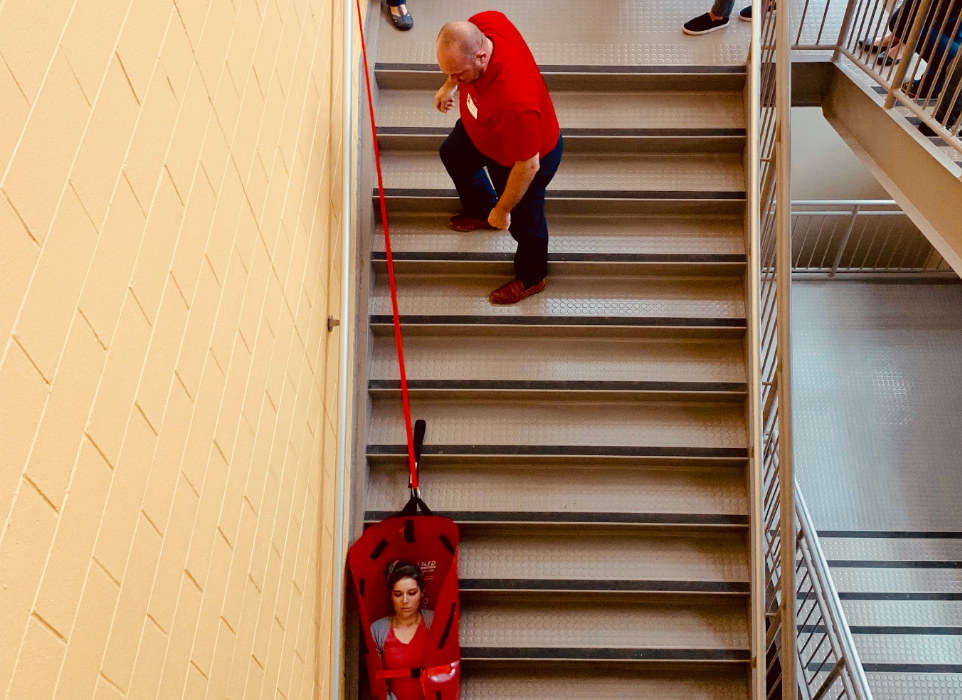In order to swiftly evacuate a vulnerable population from a large structure like a hospital, you need the right plans, the right equipment, and training. Your organization’s Med Sled training will result in benefits beyond simple knowledge of our life-saving equipment:
Coordination: Group training enhances teamwork and collaboration, ensuring everyone knows their role and how to support one another during an evacuation.
Confidence: Group practice helps individuals feel more confident about their ability to handle our equipment during an actual emergency.
Planning Gaps: Training and drills often expose weaknesses in the emergency plan or highlight equipment and procedural deficiencies.
Faster Response Times: Time is of the essence. The time that you devote to training before an emergency will result in greater speed, coordination, and efficiency when it counts.
How Much Is “Enough” Training?
At Med Sled, our recommendation is to equip your facility to perform a single-flow evacuation. That means having sufficient equipment and trained personnel to evacuate your facility in a single sweep, without anyone returning into the facility once they have exited. Particularly in the healthcare setting, nearly every staff member should receive training or have access to a “super user” who can train them “just in time.” As a best practice, we advise our clients to:
- Include training videos in the employee onboarding process;
- Download training videos and support materials to internal LMS;
- Train with the actual equipment at least once per year; and
- Make sure staff is aware of nearest cache of equipment to unit.
Med Sled can help you on all of the above and more. Learn more about our training options at https://www.medsled.com/hospitals-nursing-homes/hospital-training/

